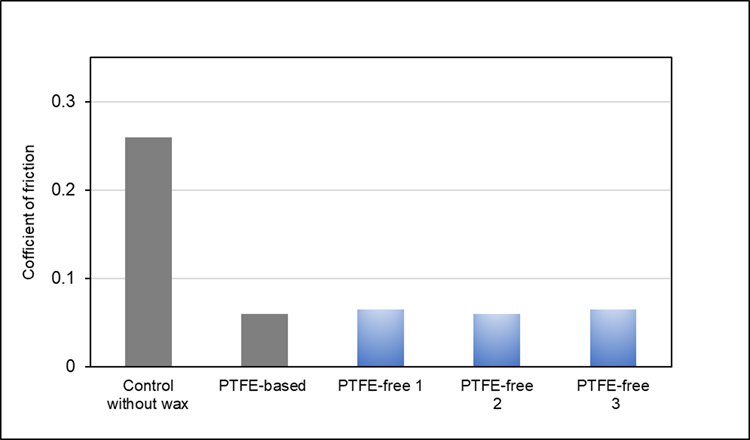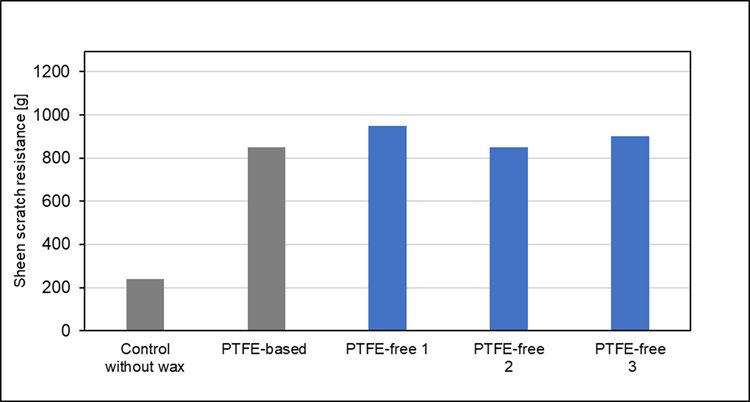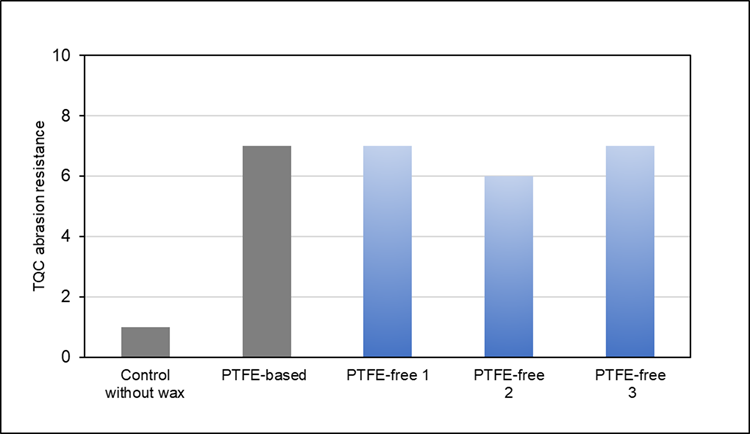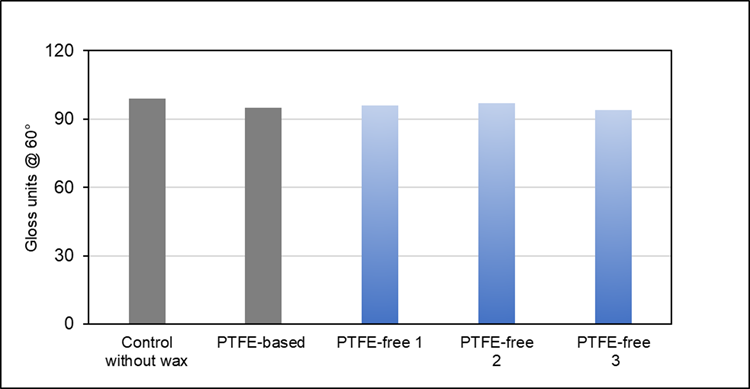As regulatory pressure continues to increase on the use of PFAS, coating manufacturers are looking for additives that offer alternatives to polytetrafluoroethylene (PTFE). The good news is that newly developed additives for waxes and dispersions demonstrate strong possibilities for use in high-performance can and coil coatings.
PTFE is a common fluoropolymer used in a variety of industries because of the desirable properties it imparts. Properties like exceptional chemical resistance, low coefficient of friction, good resistance to heat and low temperature, and enhanced surface durability make PTFE particularly useful in the coatings industry for applications such as metal packaging and coils. The PTFE particles create a micro-surface texture that promotes these sought-after properties, which is often termed the “overlay or ball bearing” effect.
Harmful low molecular weight PFAS (perfluoroalkyl and polyfluoroalkyl substances), such as PFOA (perfluorooctanoic acid) and PFOS (perfluorosulfonic acid), have been used for the polymerization of PTFE. These substances are also created in subsequent processing steps of ready-made PTFE, which has led to the increasing regulatory pressure on PFAS, including PTFE.
EU legislation currently prohibits the production, use and placing on the market of any product that has greater than 25 parts per billion (ppb) of PFOA or PFOS. In 2023, the same thresholds are being used to regulate more substances that are chemically similar to and have like properties as PFOA and PFOS, such as C9-C14 PFCA (perfluorocarboxylic acid) and C6 PFCA. There is also a proposed EU restriction that would ban many uses of PFAS chemistry, including fluoropolymers like PTFE.
Coating formulators and manufacturers have had to adapt their technologies to be compliant in this new regulatory environment and to be able to stay compliant in the future. Helping them do so are additive makers who have developed PTFE-free surface modifiers using new and alternative raw materials that can be incorporated into can and coil coating formulations to be compliant with regulations – while still providing properties that are on par with traditional PTFE-based waxes.
Assessing PTFE-Free Waxes
Can and coil coatings have typically used PTFE-based waxes to meet end-use performance requirements. Lubrizol has developed PTFE-free waxes under the Lanco™ brand name to provide compliant and environmentally friendly alternatives to PTFE-based products. In testing the mechanical properties, coefficient of friction and gloss, these novel PTFE-free technologies demonstrated equivalent performance in specific applications to products containing PTFE.
The system evaluated was solvent-borne (SB) epoxy phenolic melamine, BPA-NI* coating. The content of wax additive in the coating was 0.5% based on the total formulation weight. Reference sample contains PTFE-based wax additive and was used as a benchmark (reference). The control is an ink formulation without wax.
Comparable Friction to PTFE-Based Wax
The results in Figure 1 show that there is no appreciable difference in the CoF of the solvent-borne system. All PTFE-free additives reduce the CoF from 0.25 (control without wax) to 0.06. Most importantly, the formulations containing PTFE-free waxes showed comparable results to the formulation with PTFE-based wax.

Improved Scratch Resistance
Coatings with PTFE-free waxes improve the film hardness and exhibit comparable performance to PTFE-based waxes as shown in Figure 2. Using these new wax additives, scratch resistance can be substantially improved up to 1150 g. These findings also indicate that the PTFE-free wax alternatives are very effective in improving the surface hardness of the coatings.

Abrasion Resistance Evaluation
Abrasion results were visually evaluated with respect to wear using a scale rating of 0 to 10, where 0 is complete abrasion (0=very poor) and 10 is no abrasion (10=excellent). Coatings with no wax showed severe abrasion. The formulations containing waxes demonstrated high abrasion resistance, in particular, PTFE-free and PTFE-based waxes were comparable.

Gloss Retention
Results for gloss measured by a gloss meter at 60° show that the gloss values for all solvent-borne formulations plus waxes are similar. A solvent-based formulation prepared with PTFE-free additives show comparable results to PTFE coating formulation. These findings indicate that the PTFE-free wax alternatives are very effective in improving the gloss retention of the coated surface.

A Viable PTFE Alternative
Three micronized waxes and three wax dispersions were tested as PTFE-alternatives for can coatings. These PTFE-free waxes under the Lubrizol Lanco brand were designed to reduce the CoF and improve mechanical properties, which enable faster processing and protect the coatings surface from mechanical damage during transportation and use. The testing results showed that these PTFE-free additives demonstrate equivalent performance and offer an alternative to PTFE-based products.
Click Here for more information or contact us to learn more about our PTFE-alternative wax additives for can and coil coatings.


